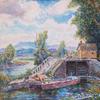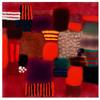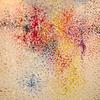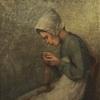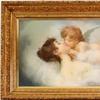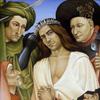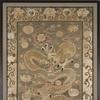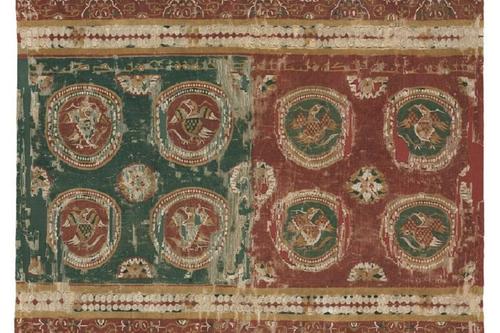
Social Fabrics: Inscribed Textiles from Medieval Egyptian Tombs
Make your reservation to visit the Harvard Art Museums now!
Discover what textiles made and worn in medieval Egypt tell us about connection and belonging in a diversifying world.
From swaddling newborns to enshrouding the deceased, woven fabrics touch nearly every aspect of human existence. The textiles in this exhibition are particularly meaningful, for they tell a bigger story about political and social power, class, trade, and concerns for the afterlife during a transformative period in Egyptian history. In the medieval era, control of the region shifted repeatedly, as Egypt was subsumed under a sequence of empires—Byzantine, Umayyad, Abbasid, and Fatimid—and the majority religion gradually evolved from pagan to Christian to Muslim. The textiles in Social Fabrics record the material and cultural impacts of these transitions, including the exchange of weaving and embroidery techniques, the availability of new fabrics and fibers, and interactions among people of different faiths.
The exhibition’s core fabrics date from the ninth through twelfth centuries and feature Arabic inscriptions. Most were produced in Egypt and belong to the prized category of tiraz textiles. Bearing state-controlled inscriptions, tiraz represent a privileged network headed by the caliph, the temporal and spiritual ruler of the Islamic world. They were distributed not on the open market, but as gifts to favored courtiers and officials. Yet also presented are a range of textiles made for different communities that merely emulate court fabrics. Taken together, these objects trace the diversity and stratification of medieval Egypt.
Although removed from their original environments, the fragments remain vital social fabrics, revealing the circumstances and aspirations of their owners and the remarkable resilience and artistry of their makers. Speaking across centuries, they invite us to consider the ways in which we structure society and how we organize and announce our social relations.
Curated by Mary McWilliams, Norma Jean Calderwood Curator of Islamic and Later Indian Art at the Harvard Art Museums (1998–2021). The accompanying catalogue was co-edited by Mary McWilliams and Jochen Sokoly, Associate Professor of Art History of the Islamic World at Virginia Commonwealth University, School of the Arts in Qatar.
This project was made possible by the Henry P. McIlhenny Fund, the Islamic and Later Indian Art Scholarship Support Fund, the Eric Schroeder Fund, and the M. Victor Leventritt Lecture Series Endowment Fund.
Share your experience: #SocialFabrics #HarvardArtMuseums
Effective Monday, March 14, the Harvard Art Museums will no longer require visitors or staff to wear face coverings in most indoor spaces. Masks will be optional throughout most museum spaces, consistent with campus, city, state, and CDC guidelines. However, until further notice, face coverings will still be required for attendees at all events and programs in Menschel Hall, the museums’ 300-seat lecture hall and theater.
The museums are committed to creating an environment in which every visitor feels equally respected, regardless of their choice to wear a face covering, and will continue to make disposable masks available for any staff member or visitor who prefers to wear one. Still in effect until further notice:
• Reservations are required for all visits. Visit the Ticketing Information page to book timed tickets up to three weeks in advance.
• All visitors age 12 or older must provide proof of full COVID-19 vaccination or proof of a negative COVID-19 PCR test administered within the previous 72 hours. These and other visitor policies are subject to change; please see the Visitor Policies webpage for current information
Please visit our website to learn about our general policies.
- Contact:
- John Connolly
- john_connolly@harvard.edu
- 6174959400



